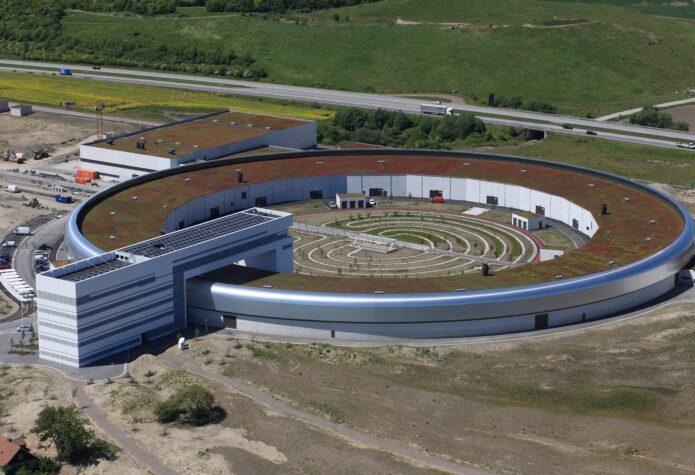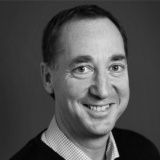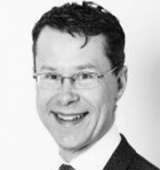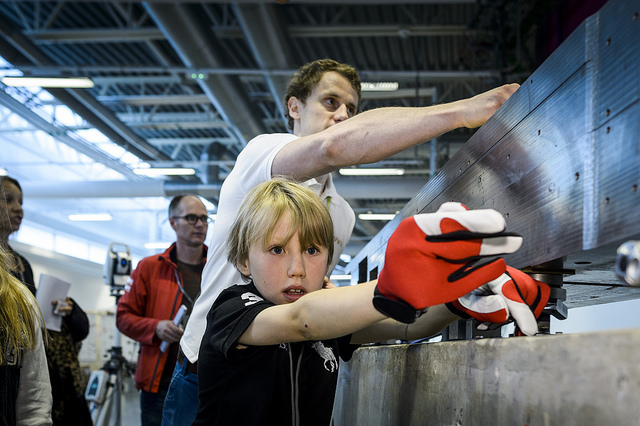MAX IV Lab: A dream building for unique X-ray research

This summer, a unique X-ray accelerator facility, the MAX IV Laboratory, was inaugurated in the old university city of Lund in southern Sweden. Every year, thousands of scientists from all over the world will be coming here to study matter. The new lab is a resource-efficient and internationally certified green building. To put it short: it is a dream come true.
You can tell how significant the newly born is by who attends its birth: the laboratory was inaugurated by the King and the Prime Minister of Sweden.
The perfectly circular MAX IV has three accelerators—a linear accelerator and two storage rings. The large ring has a circumference of 528 metres. The linear accelerator brings electrons to almost the speed of light. The electrons are then directed into the storage ring, where magnets bend their path. In this bending process, the electrons emit synchrotron light, which is an extremely intense form of light spanning wavelengths from ultraviolet to hard X-rays.
In short, MAX IV’s unique X-ray accelerator “allows us to answer scientific questions to a precision and with a complexity not previously possible”, explains Dr Christoph Quitmann, Director of the new laboratory.
The laboratory provides equipment to study almost all types of matter or material. Studying atoms and molecules that are only a few tenths of a nanometre in size provides “completely new knowledge about the world and how it works.” Thanks to its unique advantage—a very narrow and focused beam of X-rays—the scientists can measure much better the distances between atoms or measure the bonds, the “glue”, between atoms.
Dr Quitmann explains:
“Our X-ray source is so intense that we can make movies showing how things change. These movies can show how atoms move or chemical bonds are formed and broken.”
“It practically tells you what it is made of and how it would react to other substances. For example, a specific protein to a specific drug, or under specific circumstances—temperature, pressure, chemical environment, or how things should be designed to accomplish specific tasks, for example, in batteries, solar cells or catalysts.”
The new facility has been built for 29 beamlines, or experiment stations, which is more than double as many as in the previous lab, which was operational for almost three decades and is now being ramped down. This requires more physical space—and a new building.
The laboratory is a green-building dream come true: it is an energy- and resource-efficient construction built of environmentally friendly building materials. It also applies solutions based on biodiversity around the buildings, such as meadow land, water ponds, solar cells, green roofs and settlements for wild bees.
MAX IV is one of the pilots in applying the BREEAM international environmental certification standards. The MAX IV office building has achieved the Outstanding level (above 85% of maximal level)—the highest grade within BREEAM.
The excess heat generated at the X-ray research (the temperatures in energy intensive components may soar up to 55 degrees Celsius) is being sold to Lund’s central district heating system.
“Our ambition is to be a green facility with a low carbon footprint. It is doable and has very practical merits: it saves money. If the electricity bill is lowered by some 10% for two or three decades, it will save a lot of money. We get a better science facility for less taxpayer funding”, says Dr Quitmann.
The laboratory project won Best Futura Project at MIPIM in Cannes in 2014 and Swedish Green Building Council prizes as the best-performing BREEAM project and best Miljöbyggnad project in 2015.

“We would like to see ourselves as a tool in the quest to solve global challenges, so we need to be part of that in all aspects and in every way we can.”
Christoph Quitmann
Director of MAX IV Laboratory
Educated as a physicist in Germany and the US. Throughout his career, he has tried to look ever deeper into matter, attempting to understand the secrets of nature. In 2012, he moved to Lund University to become director of MAX IV.
Photo: Johan Bävman
Dr Quitmann is positive that other similar facilities may soon follow MAX Laboratory’s example.
“It needs a lot of dedication to really make it happen and not give in when you encounter small technical or financial obstacles. Utility companies are also getting more aware of this and beginning to offer combined solutions for electrical power, district heating and cooling.”
The MAX IV project has great potential to promote Sweden’s international competitiveness. “Do good things and tell people about them!” says Dr Quitmann.
In her official communication on the launch of MAX IV, the Swedish Minister for Higher Education and Research, Helene Hellmark Knutsson, said that the new laboratory is “a good example of how a small country like Sweden can pursue trendsetting projects that create an international impact.”
The world is listening. Visitors to the laboratory are omnipresent. Most of them are scientists—from Japan, China, the US, Germany, France and many other countries. The laboratory expects some two thousand researchers to visit every year. Many are also interested in the aspects of conventional facilities.
NIB has provided a long-term loan for the construction of the lab totalling SEK 1,500 million (EUR 161 million) to the facility operator Fastighets AB ML4, owned by the construction company PEAB and the property company Wihlborgs.

“NIB met our needs for long-term financing. With a 24-year loan, we were able to cover the full length of the rental agreement with Lund University for MAX IV. This and the supportive and flexible approach NIB demonstrated during the negotiation process were very significant in shaping a unique financial closure for a laboratory project of this scale and complexity.”
Arvid Liepe
CFO of Wihlborgs Fastigheter
Wihlborgs is a publicly listed property company that focuses on managing and developing commercial properties in the Öresund region.
Photo: Wihlborgs Fastigheter
Other financiers are the Swedish Research Council, Lund University, Region Skåne and the Swedish innovation agency Vinnova. The beamlines installed at the laboratory have been financed by the Swedish charitable Knut and Alice Wallenberg Foundation, twelve research universities in Sweden and with funds donated from Finland, Estonia and Denmark.


